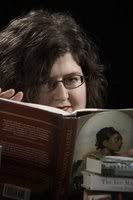 The past several years have seen an explosion of hand dyers offering their yarns to knitters. Many knitters are tempted to try their hand at designing unique colour-ways but have no idea where to begin. Linda Labelle’s new book The Yarn Lover's Guide to Hand Dyeing: Beautiful Color and Simple Knits is the perfect introduction to this complex art.
The past several years have seen an explosion of hand dyers offering their yarns to knitters. Many knitters are tempted to try their hand at designing unique colour-ways but have no idea where to begin. Linda Labelle’s new book The Yarn Lover's Guide to Hand Dyeing: Beautiful Color and Simple Knits is the perfect introduction to this complex art.Beginning with an introduction to color theory, yarn preparation, and the basic techniques used throughout the book, The Yarn Lover's Guide to Hand Dyeing is organized according to dye type. Moving from kool-aid and food colouring to commercial dyes, each dye method is reviewed and illustrated using lots of pictures. The dye technique is followed by a pattern designed to utilize the newly created yarn. Although the patterns are fun, their main purpose is to illustrate how the newly dyed yarn looks once knit up, showcasing the dye-effect. Patterns include socks and hats, ponchos/shawls, gauntlets and even a lace sweater.
Scattered throughout The Yarn Lover's Guide to Hand Dyeing are interviews with seven professional dyers. The beautifully photographed sections show the dyers at work in their studios, surrounded by stunning yarns. Labelle discusses dyeing with some of the yarn world’s luminaries; Cheryl Schaefer from Schaefer Yarn and Karen Selk of Treenway Silks. Darlene Hayes of Hand Jive Knits shares her techniques and tips with her instructions on using eucalyptus, a product available to anyone (by order through a local florist), to create a beautiful natural dye.
Labelle assumes her readers are absolute beginners and provides instructions on everything from choosing the right gloves to complex dyeing methods. It is this careful instruction which makes The Yarn Lover's Guide to Hand Dyeing an excellent choice for anyone interested in learning dye methods.
ISBN10: 0307352536
ISBN13: 9780307352538
Hardcover
160 Pages
Publisher: Potter Craft
Publication Date: November 13, 2007
tags: books book reviews knitting dyeing Linda Labelle

























